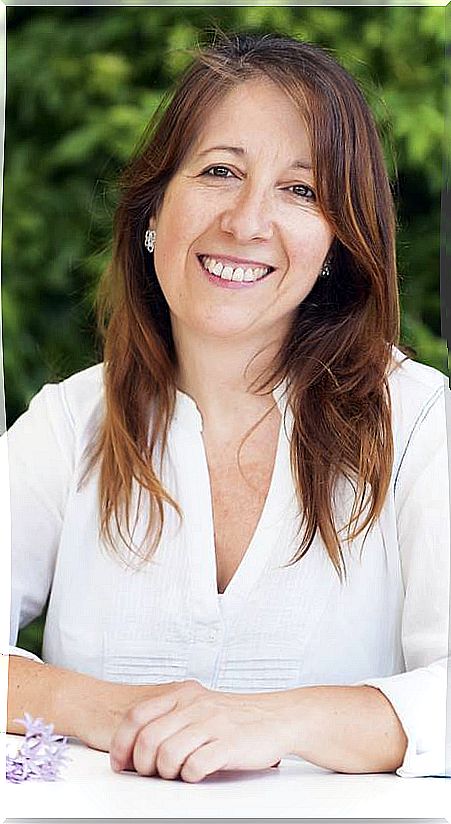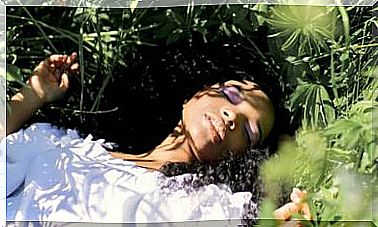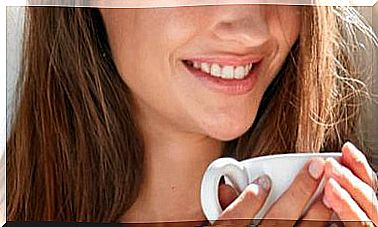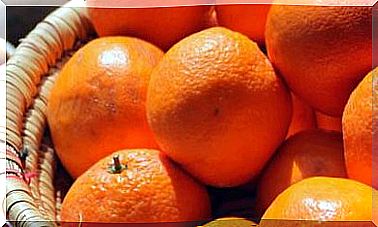“We Gain Health By Eliminating Toxins From The Environment”
Interview with Elisabet Silvestre, biohabitability specialist. In his work “Your house without toxins” he shows how to enjoy a healthy home.

A biologist and cytogeneticist, Elisabet Silvestre spent 19 years working in genetics, investigating chromosomal abnormalities. “At that time, we thought that the environment could play an important role, but we were not aware of to what extent, so once I finished my doctoral thesis, I began to do research in that field.”
That is where his “second life” began, as he explains, when he wondered what was happening to the environment and how it affected people’s health. What started as a hobby has become a new career path, and today she is a great specialist in biohabitability and environmental health.
The result of this is his recent book Your house without toxins (Comprehensive Ed.), An excellent manual where he makes an exhaustive review of all areas of daily life, especially at home, in which we expose ourselves to environmental agents that can get sick.
Elisabet not only teaches to recognize these substances or radiation and to know their harmful potential, but also offers alternatives to minimize them.
Toxics, the hidden face of progress
–We live with more comforts than our parents and grandparents, but you affirm that progress has not come for free and has a hidden face. Is the change in environmental quality more extreme than we imagine?
–We are not aware of the real bill that we pay and that our children will probably pay for all this “well-being” that we have generated.
Scientists speak of a silent pandemic. There are a whole series of environmental factors that science shows to be toxic. They are not visible, and therefore there is no perception of living surrounded by chemical compounds and radiation harmful to health.
That is why nothing is done to prevent it, even if you are constantly exposed to them.
–How many synthetic chemicals do we live with?
–They amount to more than 100,000, a huge amount. The health effects of some are known because they have been studied individually and it has been seen how they act in the body.
But of many, there is still no knowledge of its effect. And what is unknown is the synergy between them, that is, the cocktail that they all form together, because we are not exposed to a single substance, but to many at the same time.
The real problem that escapes us is how they interact with each other and in combination with other factors, because we are also exposed to natural and artificial radiation. And we don’t know the impact of all of them together.
– “The dose does not make the toxic”, you say in your book. Tell us what this means.
–In medical toxicology the law of Paracelsus had been followed that the dose makes the toxic.
Thus, for most substances it is considered that small doses would not cause an imbalance in the body. However, it is being shown that this is not the case. One of the first evidences was found in aquatic species with malformations in the reproductive organs due to substances that reach the rivers and end up interfering with the hormonal system.
These were not large discharges, but small doses, even below legislatively regulated levels, but to which aquatic organisms are routinely exposed. Later, it has been found in humans. Therefore, even if the dose is very low, it can no longer be said that nothing is wrong.
Environmental medicine
– Would that be the research field of the new environmental medicine?
–Yes, research is being carried out on how small doses repeated over time can unbalance the biological system, how some accumulate in the body, as happens with persistent organic compounds.
The effect of radiation and electromagnetic fields is also investigated. Environmental medicine is an emerging field, as are environmental diseases. There are more and more people affected by the poor quality of the environment: not only are cases of asthma or allergies increasing, but also cases of multiple chemical sensitivity and electrosensitivity.
Under the term of exposome, a line of research is being carried out that aims to address the effects on health derived from exposure to all environmental exposures, lifestyle habits, mechanisms that occur inside the body , the microbiota, … throughout life.
–And why do these disorders affect women more?
–Biologically we are prepared for motherhood and, therefore, our body has 15% more fat than that of man.
And, as many chemical compounds accumulate in adipose tissue, it is easier for us to accumulate these types of substances. Culturally, women have also been more exposed to a series of areas, such as household cleaning or cosmetics.
– These patients are forced to do a thousand turns in medical consultations and nobody recognizes the disease.
–Because its symptoms are nonspecific. Many body systems can be affected and affect each person differently.
Until they reach the right specialist who knows how to recognize the disease. This is also the case with the so-called sick building syndrome. Due to the fact of being every day in a building with a poor quality of the interior environment, you can have symptoms that are very similar to the pre-flu state: you are not well, you are tired, it is difficult for you to give up, your eyes itch … but the problem does not appear. flu. The symptoms resolve when you are on sick leave, on vacation, in short, when you are out of the building, when you are not exposed to sources of risk.
There are also those who change their house and in the new house begin to experience adverse health symptoms due to construction materials, paints … which are not biotic at all and emit substances that volatilize, are inhaled when breathing, and can be behind allergies and other respiratory problems.
Environmental control and eliminating the toxic agent is the only recipe in these cases. And it is that the environment in which we live may not be innocuous and there are factors that end up unbalancing health.
A toxic-free home
–In your book you make a very detailed analysis of our most immediate environment, the home. Do we usually live in sick houses?
– Not all the houses are “sick”; home is important because we spend at least a third of our lives in it. And it is a place where we can act.
Maybe you want to intervene at work and it is not so feasible, but at home you can decide what you buy, what food you eat, how you clean it, the cosmetics you apply to your skin, how you paint the walls … This power of decision can help you not to incorporate toxic elements that in the long run can unbalance the organism.
–It is surprising to know that the air in your home can be between two and ten times more polluted than that in the street.
–This is indicated by the studies of the EPA, the American environmental protection agency, based on the analysis of the air in private homes.
We are clear that external pollution is due to road traffic, industries, etc. In fact, the WHO has just classified environmental pollution as carcinogenic. Instead, we believe that we are safe in our home.
But those EPA studies show that indoor air can be more polluted than outside.
It’s amazing. You think: how does that pollution get into the house? Where does it come from? But you have to see what products you paint the house with, the furniture or carpet materials, the detergents, softeners or air fresheners you use …
Recognizable by its distinctive pungent, “new” odor, formaldehyde is an irritant, even carcinogenic, and one of the most common invisible enemies.
– Improving air quality at home would be the first step? Where do we start?
–First, ventilate. Ventilation is very important.
We should return to the healthier habits of ventilating the houses 15 or 20 minutes a day, depending on whether it is summer or winter, but there must be a good air renewal and on a regular basis. Second, try not to introduce substances that can reduce this environmental quality.
– You say that “we clean our houses dirtying them with chemical products”. What alternatives do we have?
–It is a great paradox.
We have learned to make an asepsis of practically everything: the bathroom, the kitchen, etc., but with that cleaning we dirty the home with chemical substances. They are low doses, but they suppose a continuous exposure because it is cleaned regularly.
Salfumán, ammonia and bleach are ubiquitous in many homes, along with a whole series of products: those that remove lime, those that polish wood or glass …
Environmental formulations have been improved – for example, they have less phosphates to prevent eutrophication of the waters – but they carry a whole series of toxic substances that, when we vaporize, are inhaled and pass into the body or, when applied to the ground, they end up in the air.
–Reading the labels barely allows us to know what we are using…
–It can be difficult to know the many chemical substances with which we interact and learn them all. The simplest and most practical thing is to opt for detergents with ecological stamps.
You can also use items from the pantry, such as baking soda, white vinegar, or lemon. By adding water and a little neutral soap, we can make our cleaners easily and cheaply, and they are very healthy.
–Recommend us some plants that clean the air.
–Pothos, dieffenbachias and ficus are very good filter feeders and purify the air. It is enough with two or three medium plants in a space of 10 or 15 square meters.
NASA analyzed how each species captures more toxins than others. With a little variety, it will be more effective.
Toxic that enter through the skin
-You give a chilling fact: the woman who regularly puts on makeup gives entry into her body 2 kilos of synthetic products a year.
-That study surprised me a lot.
Heavy metals like mercury or lead shouldn’t be in lipstick. Putting on makeup does not have to pose a problem for the skin or the health of the body. In fact, a wide range of certified organic cosmetics is marketed.
And we should be very careful with the hygiene products that we use with children. They are not miniature adults, we cannot use the same threshold levels set for adults.
–Phthalates and parabens are two black beasts in the world of conventional cosmetics. Why are they used?
–Phthalates are added as softeners and plasticizers. Parabens act as preservatives, allowing a cream that you open today to continue to be good in a few months.
Once inside the body, these substances act by mimicking hormones, thereby deregulating the hormonal system: they can amplify or reduce their action.
It is what we know as endocrine disruptors. Even at very low doses, scientific studies show its relationship with childhood asthma, allergies, with metabolic problems, for example the increase in obesity, diabetes, fertility problems, low birth weight, malformations in children to genital level, cryptorchidism –the incomplete descent of the testicles–, changes in the age of the onset of the first period in girls –which is getting lower and lower–.
They are also associated with a higher incidence of hormone-dependent cancers such as breast cancer. indeed, there is an increase in health problems due once again to this silent exposure.
–With sun creams, do we also have to take precautions?
–We have gone from a culture of sunbathing excessively, even in the central hours of the day, to guidelines of recommending applying protective creams on a regular basis.
Clearly, steps must be taken to reduce the incidence of melanoma. In any case, it cannot be ignored that when applying sunscreen, the time of sunbathing is usually lengthened because you do not have the feeling of exceeding the exposure.
And, the more time in the sun, the more cream we put on the body. Some protectants incorporate substances that act as a hormonal disruptor, for example oxybenzone and benzophenone. Read the label and choose the ones that don’t have them.
– Could there be a relationship between the abuse of sun creams and vitamin D deficiencies?
-Yes. These creams filter the shorter wave ultraviolet rays, which are what help us to produce vitamin D.
It has been proven that the levels of vitamin D in the population have dropped a lot, in a latitude like ours, with a lot of sun. And that is a problem because it affects the mental, nervous and immune systems, and acts on the entire calcium metabolism or osteoporosis.
On the other hand, it has also been shown that optimal levels of vitamin D help tumor cells to be less resistant to cancer treatments, so a vitamin D deficiency makes these treatments less effective. Therefore, the sun is very important, necessary; and with an exposure of 20 minutes a day, without burning.
–In your tour of the home, clothing is an important section. Natural fibers like cotton or linen are not safe either?
–Between synthetic clothing and cotton, linen or silk we notice that comfort is very different.
They do not produce static electricity, the body perspires and that makes you feel more comfortable. For that reason alone, it is convenient to choose clothes made of natural fabrics. But if analyzed further, the cotton may have been treated with pesticides in its cultivation, or harmful substances have been incorporated during its production. Also substances that act as endocrine disruptors.
A person with multiple chemical sensitivities will notice it right away. Hence, especially in those cases, the convenience of preferring organic cotton. With the garments that are more in contact with the skin, it would be necessary to be more careful, such as, for example, with underwear, bedding and especially those of babies, children and sensitive people.
Eat organic and sleep well
– What toxins can food provide?
–With the Mediterranean diet we have been educated a lot in eating fruits and vegetables. But we are missing a second step, because organic food should be more popular.
We know from studies the problem of synthetic pesticides and fertilizers used in conventional agriculture; so if we eat more vegetables we are surely ingesting more doses of harmful substances.
A vegetarian-oriented diet has numerous favorable properties for the body, but it must also be of quality and that goes through the guarantees that it is organic. Or, as I like to animate: create your own garden and grow your own food.
Likewise, we can destroy the qualities of a food with cooking systems and very high temperatures. Fried foods should be minimized, because these cooking processes generate new substances that are harmful to health.
–You focus your efforts so that the bedroom is free of contamination. What do you recommend specifically?
“We should look at the bedroom with our idea of a health spa.” It is the place where we are going to recover, to regenerate, to balance the whole organism.
It is a space in which we spend eight hours every day, a third of our lives. At that time of the day, the body starts the mechanisms of rebalancing, cell repair, the pineal gland, the production of melatonin …
We have to take care that there is no environmental factor that can interfere in all these processes. The pineal gland works well when there is no light, therefore one of the most important aspects is to sleep free of light pollution, without getting light from the street or the rest of the house.
“Better to sleep in total darkness then?”
-Yes. The lights in the bedroom should give information to the brain that the electromagnetic spectrum emitted is the same as that of the sun at dusk, when the frequencies of red predominate, like the light of a candle.
For this reason, it is advisable to avoid blue lights at night; and if the children are afraid, leave a dim and reddish light. In this way, the information that the brain receives is to go to sleep, which helps to have a restful sleep.
Temperature is also another important factor. a lower one is preferable and sleep warm with a duvet.
“And the position of the bed?”
–It is recommended to avoid electromagnetic fields. This is what we call energy hygiene.
It means that the cables of the electrical installations, those that are near the head of the bed, must go in screened tubes. Either automatic electrical disconnects are installed. With that your body is no longer exposed.
And it is better to discard equipment such as electronic radio alarm clocks or having your mobile phone or Wi-Fi plugged in at night … While sleeping, the technology that emits electromagnetic fields should be as far away as possible from the body.
These would be artificial radiation; then there are the natural ones. In this sense, the bed must be located in an area where there is no intense natural radiation from the earth, that is, in more stable areas.
-Bioconstruction is gaining ground thanks to dissemination works such as yours or Mariano Bueno’s. Do you think that soon it will be unthinkable to build a house without following criteria of a healthy construction for people?
– I do not know how long it will take to build all the houses with these characteristics, but it is the only way.
The pioneers of bio-construction (a word that derives from the German word Baubiologie “construction biology”) began more than 25 years ago to disseminate all these topics and now they are finally more widespread.
I teach the subject of biohabitability in different master’s and postgraduate degrees, explaining to architects how to make healthier environments. Associations such as GEA provide training in biohabitability. And the University of Lleida is doing the first master’s degree in bioconstruction in the State and the IEB, the Spanish Baubiologie Institute, has been created. Progress is being made in the dissemination of designing healthier environments.
Now that we are betting on rehabilitation or passive houses, I consider it very important to do so with bioconstruction criteria. Creating a healthy environment is the doctor’s prescription for certain pathologies: when you have a chemical sensitivity, rather than giving you a medicine, the treatment is to improve environmental quality.
Thus, the way to gain health is to achieve healthy environments, without toxins.









